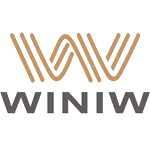The artificial leather industry has evolved from being a cost-effective alternative to natural leather into a hub of innovation, driven by sustainability goals and technological breakthroughs. As global demand for ethical and durable materials rises, synthetic leather is carving out a significant niche in fashion, automotive design, and beyond. This article examines the latest advancements, emerging applications, and the role of eco-conscious practices in shaping the industry’s trajectory.
---
Market Expansion and Sustainability Drivers
The artificial leather market is on track to surpass $23 billion in revenue by 2025, with a steady growth rate of 5.8% annually. Asia-Pacific, led by China, dominates production and consumption, contributing over 40% of global output. This growth is fueled by demand from sectors such as automotive interiors, footwear, and furniture, where synthetic leather’s adaptability and affordability are key selling points.
Environmental concerns, however, are reshaping the industry’s priorities. Traditional materials like PVC and polyurethane (PU) have faced criticism for their reliance on fossil fuels and non-biodegradable properties. In response, manufacturers are investing in greener alternatives. For example, plant-based polymers derived from pineapple leaves (Piñatex) and mushroom mycelium (Mylo) are gaining traction as biodegradable options. Additionally, recycled polyester and bio-based PU are reducing the carbon footprint of synthetic leather production.
Technological Breakthroughs Enhancing Versatility
Recent advancements are closing the quality gap between artificial and natural leather:
1. High-Performance Microfiber: Ultra-fine microfiber technology replicates the tactile feel of genuine leather, offering superior softness and durability for luxury goods.
2. Functional Coatings: Innovations such as water-resistant finishes, anti-microbial treatments, and heat-resistant layers are expanding synthetic leather’s use in medical, outdoor, and automotive settings.
3. 3D Printing Integration: Customizable textures and patterns enabled by 3D printing are revolutionizing design possibilities, catering to bespoke consumer preferences.
These technologies not only improve product performance but also align with circular economy principles by enabling easier recycling and waste reduction.
---
Sustainability as a Market Differentiator
Consumer demand for ethical products is pushing brands to adopt transparent and eco-friendly practices. Key developments include:
- Certifications: Labels like Global Recycled Standard (GRS) and Cradle-to-Cradle certifications assure buyers of a product’s environmental credentials.
- Closed-Loop Systems: Companies such as Veja and Bolt Threads are pioneering closed-loop production, where waste materials are repurposed into new synthetic leather products.
- Low-Impact Manufacturing: Waterless dyeing techniques and energy-efficient processes are minimizing resource consumption, addressing critiques of traditional leather tanning.
Europe and North America are leading this shift, with regulations like the EU’s Green Deal incentivizing sustainable material adoption.
---
Emerging Applications and Regional Growth
Beyond traditional uses, artificial leather is penetrating new markets:
- Electric Vehicles (EVs): Lightweight synthetic leather is ideal for EV interiors, aligning with automakers’ sustainability targets. Brands like Tesla and BMW are increasingly incorporating vegan leather options.
- Tech-Integrated Fabrics: Smart textiles embedded with sensors or conductive threads are creating opportunities in wearable technology and smart home decor.
- Emerging Economies: Rapid urbanization in regions like Africa and Southeast Asia is boosting demand for affordable, durable synthetic leather in everyday products like bags and upholstery.
---
Challenges and Strategic Adaptation
Despite progress, the industry faces obstacles:
- Cost Competitiveness: Eco-friendly materials often come with higher production costs, posing challenges in price-sensitive markets.
- Consumer Perception: Overcoming the “cheap plastic” stigma requires emphasizing premium quality and sustainability in marketing campaigns.
- Supply Chain Disruptions: Geopolitical tensions and raw material shortages, particularly post-pandemic, necessitate diversified sourcing strategies.
To address these issues, companies are leveraging AI for efficient resource management and collaborating with startups to accelerate material innovation.
---
Future Outlook
The artificial leather industry is at a pivotal juncture, where sustainability and innovation intersect to redefine modern manufacturing. As biodegradable materials and digital production tools become mainstream, the sector is poised to meet the dual demands of environmental responsibility and consumer versatility. Stakeholders who prioritize R&D, transparency, and agile supply chains will likely lead the next wave of growth.
In conclusion, artificial leather is no longer just an alternative—it’s a forward-looking solution for industries striving to balance ethics, aesthetics, and functionality. By embracing eco-conscious practices and cutting-edge technologies, the sector can secure its place in a rapidly evolving global market.

 EN
EN








































